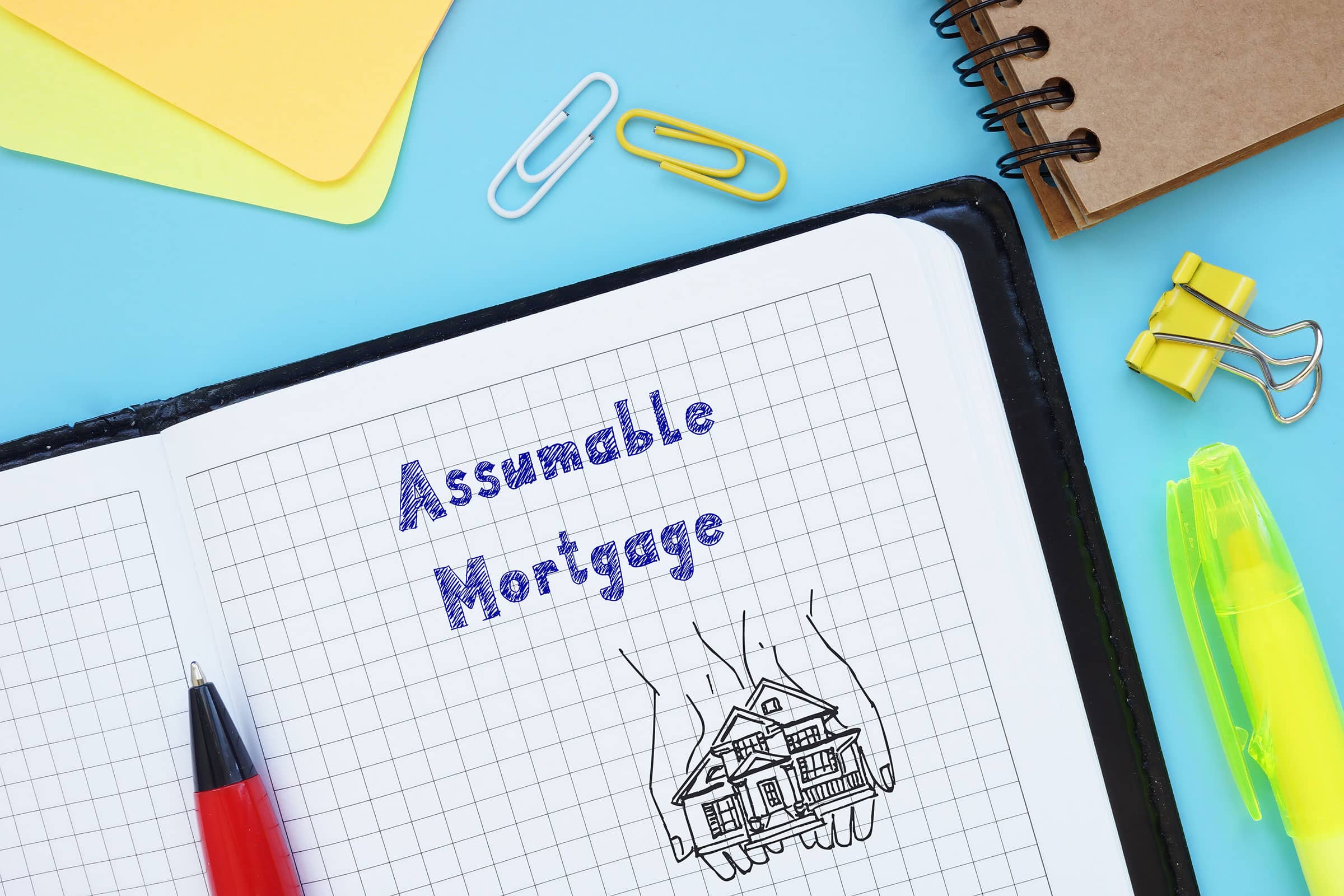
The Ins and Outs of Assumable Mortgages
An assumable mortgage allows buyers to take over the existing mortgage of a seller, potentially resulting in lower interest rates and monthly payments. Understand the eligibility requirements, benefits, and challenges of assumable mortgages before making an informed decision.
- Assumable mortgages allow buyers to take over the interest rate of the seller’s current mortgage, providing an opportunity for buyers to purchase a home with a lower interest rate and reduced monthly payments.
- Assumable mortgages attract significantly more buyers for sellers’ homes, offering a potential solution for sellers in the current housing market.
- Not all home loans are assumable, with most conventional mortgages excluded. However, FHA, VA, and USDA loans are assumable if requirements are met, and millions of mortgages are eligible for assumption.
- The majority of people are unaware of assumable mortgages as an opportunity, leading to challenges in advertising the affordability benefit. Educating sellers and buyers about assumable mortgages is crucial for their success.
What Is an Assumable Mortgage?
You may be wondering what an assumable mortgage is and how it can help you with your home purchase in 2023. An assumable mortgage allows the buyer to take over the seller’s mortgage loan. It is attractive if the interest rates have risen since the seller originally purchased the home. It can provide financing with a lower interest rate and allows buyers to buy a home without obtaining a new mortgage. Requirements vary based on the type of loan, such as FHA, VA, or USDA, and the buyer must meet the lender’s criteria to assume the mortgage. Advantages of an assumable mortgage include reduced closing costs, no appraisal, and lower interest rates, while disadvantages to consider are the limited choice of lenders and a hefty down payment if the seller has a lot of home equity. Understanding the process and benefits of assumable mortgages can help you make an informed decision when buying a home in 2023.
Types of Assumable Mortgages
Most conventional mortgages are not assumable, but FHA, VA, and USDA loans may be assumable if specific requirements are met. FHA and VA loans usually require lender approval for an assumable mortgage, and the seller must meet specific criteria for an assumable FHA loan. VA loans are available to eligible military members, service members, and their spouses. Benefits of assumable mortgages include lower interest rates and no appraisal requirement, while tips for buyers considering assumable mortgages include improving their credit score and ordering a home inspection. To find homes with assumable mortgages, look for FHA, VA, and USDA loans when searching for listings. Assumable mortgages can provide an affordable option for homebuyers and positively impact the real estate market.
Eligibility Requirements for Assumable Mortgages
In many cases, buyers are required to meet certain eligibility requirements to assume a mortgage. FHA loans require a minimum down payment of 3.5% and a credit score of at least 580. There are income limits and location requirements for USDA loans, and a credit score of 620 or higher is usually required for VA loans. Compared to traditional mortgages, FHA and VA loans often require lender approval. In addition to reducing closing costs, assuming a mortgage does not require an appraisal.The disadvantages of assuming a mortgage may include a hefty down payment and a limited range of lenders. Mortgage trends in 2023 will be shaped by an understanding of assumable mortgages and their benefits and drawbacks.
How Do Assumable Mortgages Work?
Firstly, it is important to find a property that has an assumable mortgage. However, these types of mortgages are not very common in today’s market , so it may require some research and assistance from a real estate agent to locate such a property.
Secondly, in order to assume the mortgage, the new borrower must meet the qualification requirements set by the lender. This typically involves providing financial documentation, undergoing credit checks, and verifying income to prove that they have the ability to handle the mortgage payments.
Next, the new borrower and the original borrower must negotiate the terms of the assumption. This negotiation process may involve determining the purchase price of the property, any required down payment, and other conditions. To ensure a smooth transaction, it is advisable to involve a real estate attorney or professional.
Once the negotiation is complete, the lender needs to approve the assumption before it becomes official. They will review the new borrower’s financial information and creditworthiness to determine if they are eligible to assume the mortgage.
Additionally, the new borrower may be required to pay a fee to the lender for assuming the mortgage. The amount of this fee can vary depending on the lender and the terms of the mortgage.
Finally, once the lender approves the assumption and all the necessary paperwork is completed, the new borrower becomes responsible for making the mortgage payments and fulfilling all the terms of the mortgage.
Pros and Cons of Assumable Mortgages
Here are the pros and cons of assumable mortgages. Assumable mortgages can offer many advantages, such as lower closing costs, the potential for a lower interest rate, and no need for an appraisal. However, there are a few potential drawbacks to consider. For instance, buyers are limited to the current lender, and there may be a need for a large down payment if the seller has a high amount of home equity. It is important to weigh the benefits and drawbacks of assumable mortgages before deciding if this is the right option for you. Other considerations include the lender’s requirements, such as a minimum credit score, and the need for compensation for the seller’s equity stake. Make sure to carefully review all of the potential advantages and disadvantages before committing to an assumable mortgage.
Conclusion
In conclusion, assumable mortgages are a growing trend in the housing market in 2023. They offer buyers the opportunity to take over the existing mortgage of a seller, potentially resulting in lower interest rates and monthly payments. Assumable mortgages are especially attractive to sellers as they can attract more buyers for their homes in the current housing market. Note that not all home loans are assumable, with most conventional mortgages being excluded. FHA, VA, and USDA loans are eligible for assumption if requirements are met. Despite the potential benefits, many people need to be aware of assumable mortgages as an opportunity, leading to challenges in advertising their affordability. Educating sellers and buyers about assumable mortgages is crucial for their success. Overall, assumable mortgages can provide an affordable option for homebuyers and positively impact the real estate market. Still, it is vital for buyers to carefully consider the eligibility requirements and potential drawbacks before making a decision.







